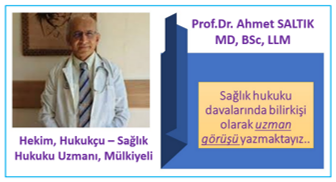
As of April 22, 8 PM EST | Click on the pagination tool to the right to see more
| Country/Region | Cases | Deaths | Recoveries |
|---|---|---|---|
| Total | 2,623,415 | 183,027 | 709,694 |
| United States | 839,675 | 46,583 | 77,366 |
| Spain | 208,389 | 21,717 | 85,915 |
| Italy | 187,327 | 25,085 | 54,543 |
| France | 157,125 | 21,373 | 41,326 |
| Germany | 150,648 | 5,279 | 99,400 |
| United Kingdom | 134,638 | 18,151 | 683 |
| Turkey | 98,674 | 2,376 | 16,477 |
| Iran | 85,996 | 5,391 | 63,113 |
| China | 83,868 | 4,636 | 77,861 |
| Russia | 57,999 | 513 | 4,420 |
| Brazil | 45,757 | 2,906 | 25,318 |
| Belgium | 41,889 | 6,262 | 9,433 |
| Canada | 41,650 | 2,077 | 14,454 |
| Netherlands | 35,032 | 4,068 | 101 |
| Switzerland | 28,268 | 1,509 | 19,900 |
| Portugal | 21,982 | 785 | 1,143 |
| India | 21,370 | 681 | 4,370 |
| Peru | 19,250 | 530 | 7,027 |
| Ireland | 16,671 | 769 | 9,233 |
How ‘Broad, Ubiquitous Testing‘ Can Help Restart the U.S. Economy
For weeks, Americans have stayed home as much as possible to help stop the spread of the coronavirus, but social isolation has come at a huge cost to the economy and people’s livelihoods.
What will it take to restart the economy in the safest way possible? Rajiv Shah, president of the Rockefeller Foundation, believes the answer is extensive testing. Doing so would make it possible to identify and suppress any outbreaks quickly, reducing the number of people who get sick and the number of people who have to be confined to their homes.
“Really the only way our country is going to deal with over the next 12-18 months, before there is a widespread vaccine available and administered, is going to be making sure there’s broad, ubiquitous testing available for every American,” said Shah during the TIME 100: Finding Hope virtual summit, which convened experts and leaders to discuss solutions to the global COVID-19 pandemic. “Right now, the guidelines are very, very restricted. America has probably one of the lowest levels of testing availability around the world for its population.”
In late April, the Rockefeller Foundation, a private philanthropic organization, released a national action plan to drastically scale up testing and contact tracing in the U.S., so that the country can reopen and more effectively respond to the outbreak at the same time.
The first goal of the plan is to dramatically scale up testing. “Right now, we’re stuck at about a million tests per week,” said Shah. Under the plan, the U.S. would ramp up that number to 3 million in the next eight weeks, by using university and research laboratories across the country that currently don’t process these types of tests. In six months, the goal is to test 30 million Americans per week. “That’s going to take a lot more of a transformational change,” says Shah, including rolling out at-home and point-of-care testing. “Once we get those types of technologies online, we believe it’s important to also get states and cities to come together with the federal government and pool their procurement and purchasing capacity, and project it out over a longer period of time,” Shah added. “It’s going to take leadership and it’s going to take partnership.”
Widespread testing and contact tracing have been successful internationally. South Korea confirmed its first COVID-19 case around the same time as the U.S., but the country’s mortality rate from the disease is half that of the U.S., the plan’s authors point out. One big difference is that South Korea has tested three times as many people per capita as the U.S.
“We’re putting tens of millions of dollars behind its implementation,” Shah says of the action plan. “It’s not just a report, but it’s actually a platform that cities and states can use to go ahead and access larger volumes of testing supplies over longer periods of time.”
This article is part of #TIME100Talks: Finding Hope, a special series featuring leaders across different fields sharing their ideas for navigating the pandemic. Want more? Sign up for access to more virtual events, including live conversations with influential newsmakers.





